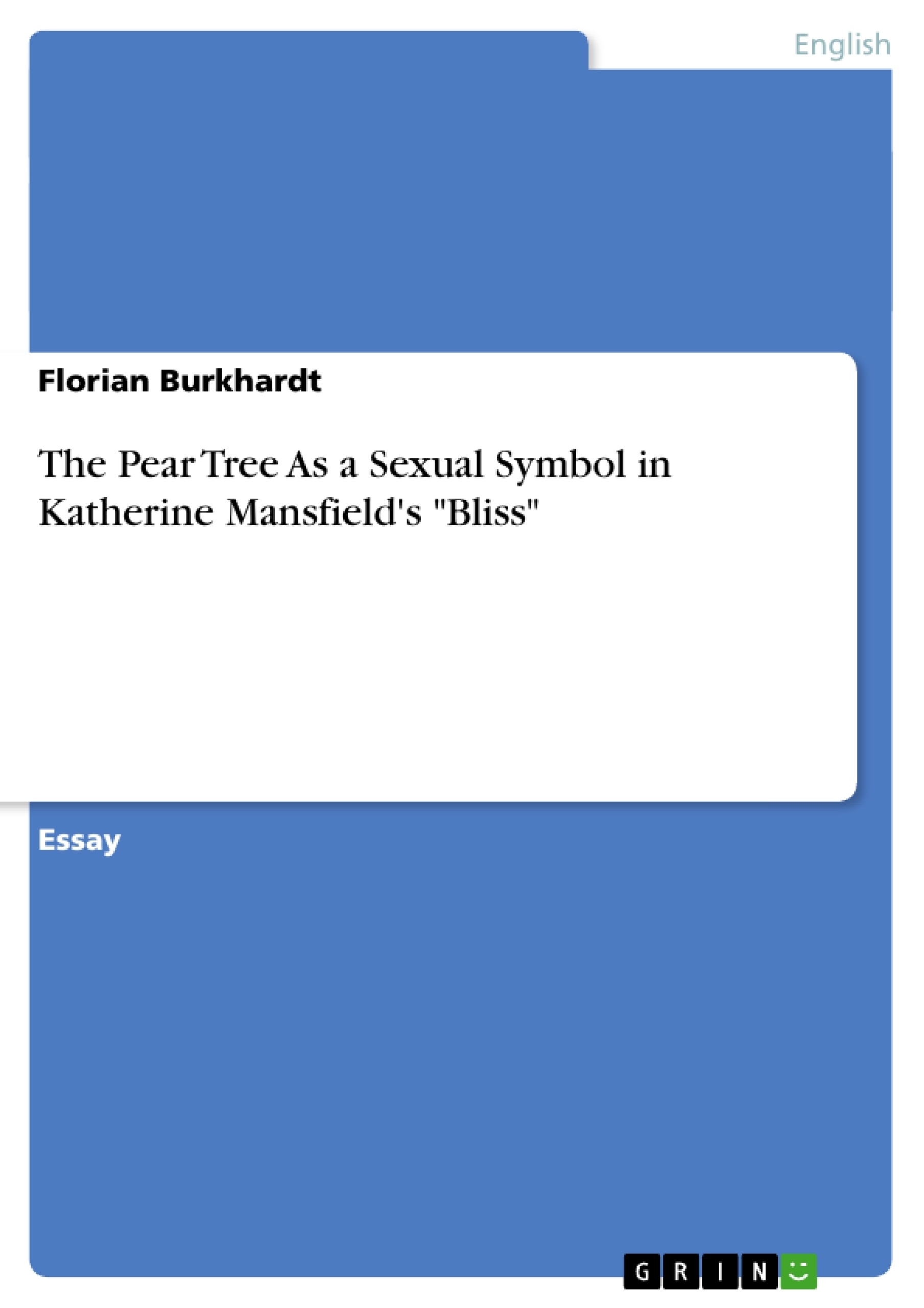Katherine Mansfield’s story “Bliss” can be read as a satire on the artist-milieu of her time, combined with the subject of disloyality. But it also is full of symbols. To understand the complete meaning of the story, we have to interpret these symbols.
As Bertha Young, the protagonist, identifies herself with the pear tree, this symbol seems to be very important for our interpretation (especially of the last, mysterious sentence). In my opinion the pear tree stands for two aspects related to Bertha which might help us to get a deeper view on “Bliss”: her bisexuality and (far more relevant) her virginity.
Why is the pear tree a symbol for Bertha’s bisexuality?
Botanically a peat tree can be regarded as bisexual by nature because it is self-fertilizing . It has both female and male organs. But I also can verify my thesis according to text: When Bertha shows her garden to Pearl Fulton, this is a crucial moment of the story. Bertha is highly emotional in this scene because she forgets the world and the time around her and her thoughts are described emotively. The pear tree occurs in this scene in a remarkable way for it seems “to touch the rim of the round, silver moon” . We have to keep in mind that the pear tree symbolizes Bertha for she explicitly says that (p.123) and her dress resembles to the pear tree. The moon and its silver light are an important symbol, too. Therefore we need to find out its meaning. I suggest to interpret the moon in “Bliss” in a very classical way: The moon is an ancient symbol for the feminine principle in the world (as the sun stands for the masculine; cp. lat. luna, f., sol, m.). The cycle of the female sex hormone (i. e. menstruation) and the cycle of the moon are similar. So we can make a simple connection between the moon and female sexuality. Why is the moon so important in this story? Because Pearl is associated with the moon. She is dressed all in silver, she has “moonbeam fingers” (p.135) and Bertha compares her to the moonlight, thinking: “(...) the light of (...) [the] moon, silver as Miss Fulton”(p.129).
Table of Contents
- The pear tree as a sexual symbol in Katherine Mansfield's "Bliss"
- Why is the pear tree a symbol for Bertha's bisexuality?
- The pear tree's botanical characteristics
- Bertha's emotional connection to the pear tree
- The symbolism of the moon and Pearl
- The phallic imagery of the pear tree
- Why is the pear tree a symbol for Bertha's virginity?
- The pear tree's botanical symbolism of virginity
- Bertha's immature attitude towards her child
- Bertha's childish behavior and immaturity
- Bertha's first experience with sexual arousal
- Bertha's frigid nature and her marriage
- Bertha's awakening sexuality and connection to spring
- "Bliss" as a story about discovering sexual desire
- Bertha's bisexuality and immature handling of desire
- The tragic moment and unattainable desires
- The meaning of the final sentence
- Conclusion
Objectives and Key Themes
This essay aims to interpret the symbolism of the pear tree in Katherine Mansfield's "Bliss," arguing that it represents both Bertha Young's bisexuality and her virginal state of mind. The analysis focuses on the text's imagery and symbolic language to explore the themes of sexuality, female identity, and societal expectations.
- The symbolic representation of the pear tree
- Bertha Young's complex sexuality and emotional immaturity
- The exploration of female desire and societal constraints
- The role of symbolism in interpreting literary texts
- Mansfield's critique of societal norms regarding female sexuality
Chapter Summaries
The essay begins by introducing the central argument: the pear tree symbolizes Bertha's bisexuality and virginity. It then delves into the first point, exploring the botanical aspects of the pear tree and its connection to Bertha's emotional state during a significant scene with Pearl Fulton. The essay further examines the symbolism of the moon and its association with Pearl, highlighting the sexual undertones in Bertha's interactions with her. The second part of the essay explores the symbolic connection between the pear tree and Bertha's virginity, emphasizing her immature behavior and attitudes toward her child and marriage. The analysis then connects Bertha's awakening sexuality to the symbolism of spring, contrasting it with her previous frigidity. The essay continues by detailing Bertha's feelings about her sexuality, and the role that society plays in shaping her understanding of her own desires.
Keywords
Katherine Mansfield, Bliss, Symbolism, Pear Tree, Bisexuality, Virginity, Female Sexuality, Societal Expectations, Literary Interpretation, Sexual Awakening.
- Quote paper
- Florian Burkhardt (Author), 2004, The Pear Tree As a Sexual Symbol in Katherine Mansfield's "Bliss", Munich, GRIN Verlag, https://www.hausarbeiten.de/document/46353


